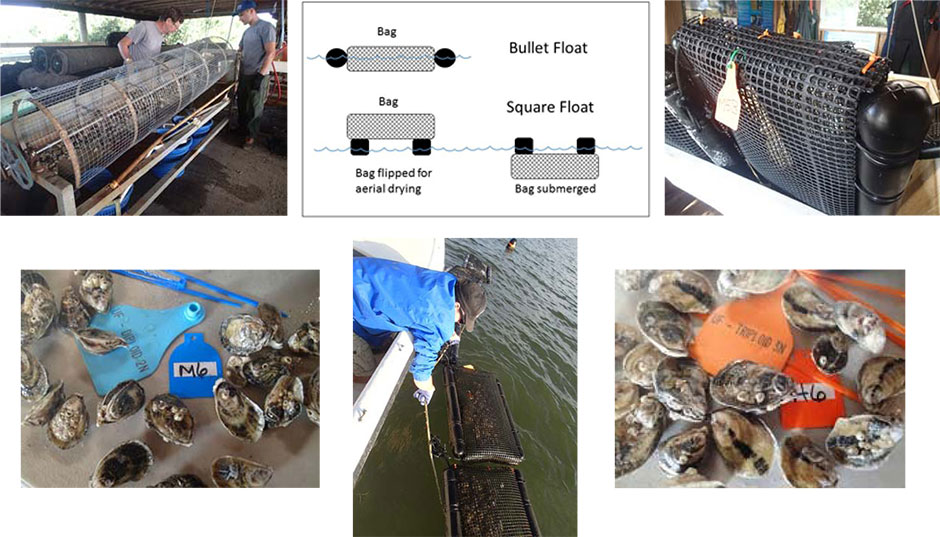The following graphs summarize the growth (shell height and total weight) of diploid (2N) and triploid (3N) oysters cultured in 9 mm mesh floating bags at the UF experimental lease within the Dog Island Lease Area near Cedar Key over a nine-week period (August 4 – October 6, 2016). Details during this culture period can be found in prior news articles.

Oysters grown in the 9 mm bags were used to stock replicated field trials to continue to evaluate ploidy types (triploid versus diploid), but also to evaluate the following management practices:
- Stocking densities of 125, 150, and 175 oysters per bag
- Float design (square versus bullet) to support the vexar bags
- Biofouling control (aerial drying of square float-supported bags versus flipping of bullet float-supported bags)
Prior to stocking, 2N and 3N oysters were separately tumbled for size grading (see picture below). This process sorted the oysters into three size classes: less than ¾”, ¾” to 1”, and greater than 1” in shell thickness. About 53% of the diploids and 14% of the triploids fell into the two smaller size classes. Oysters greater than or equal to 1” in shell thickness were used to stock the growout bags. The average size of diploids was 51 in shell height (SH) and 18 grams in total weight (TW), whereas triploids averaged 54 mm SH and 26 g TW. To test the culture methods above, 2700 oysters of both ploidy types were stocked into eighteen 14 mm square mesh vexar bags at 125, 150, and 175 oysters/bag (6 bags/density/ploidy type), for a total of 36 bags. The bags are supported by two 4½” square floats; details on attachment can be found in an earlier new article. In addition, six bags were stocked each with 150 3N oysters; cylindrical or “bullet” floats were attached on both sides of bag. With this float design, the bags are flipped periodically, but the placement of the floats allows the oysters to always be submerged. Thus, the bags do not have to be “flipped back” after drying as is required of bags supported by square floats. The following table provides a summary of the culture methods being evaluated in this growout study, which was initiated on October 20-21. Oysters will be sampled every 6-8 weeks for growth and harvest will occur when the majority of oysters reach 75 mm (3”) in size.





